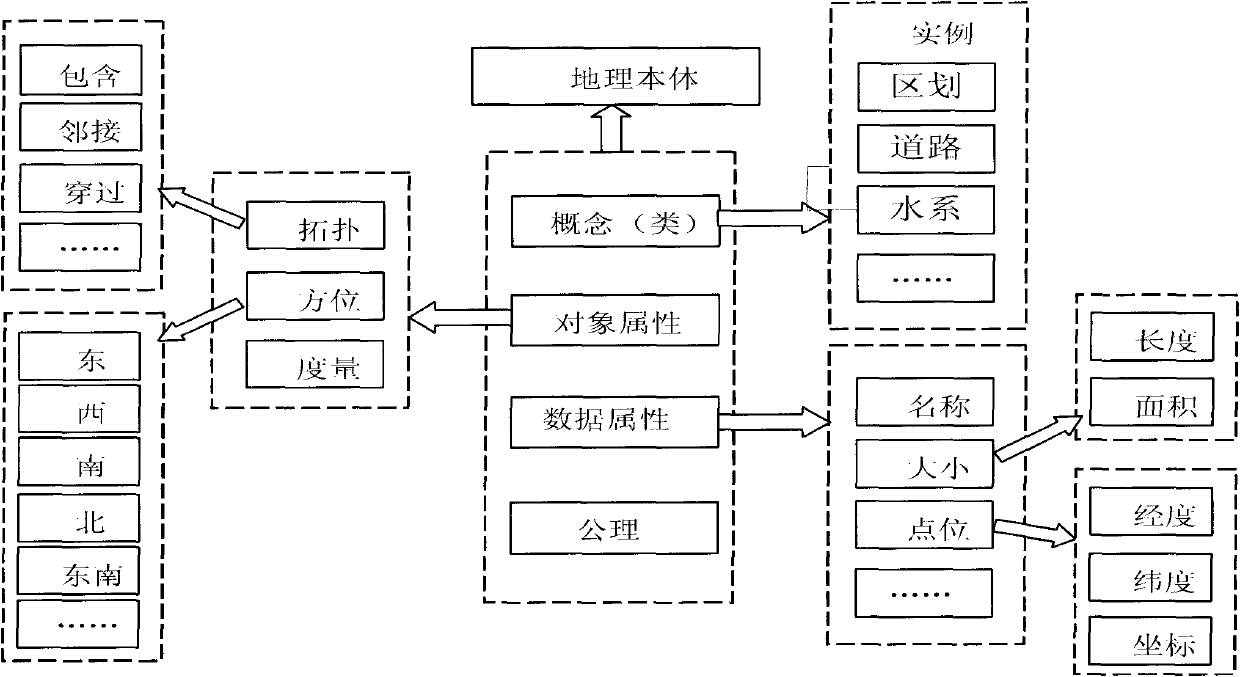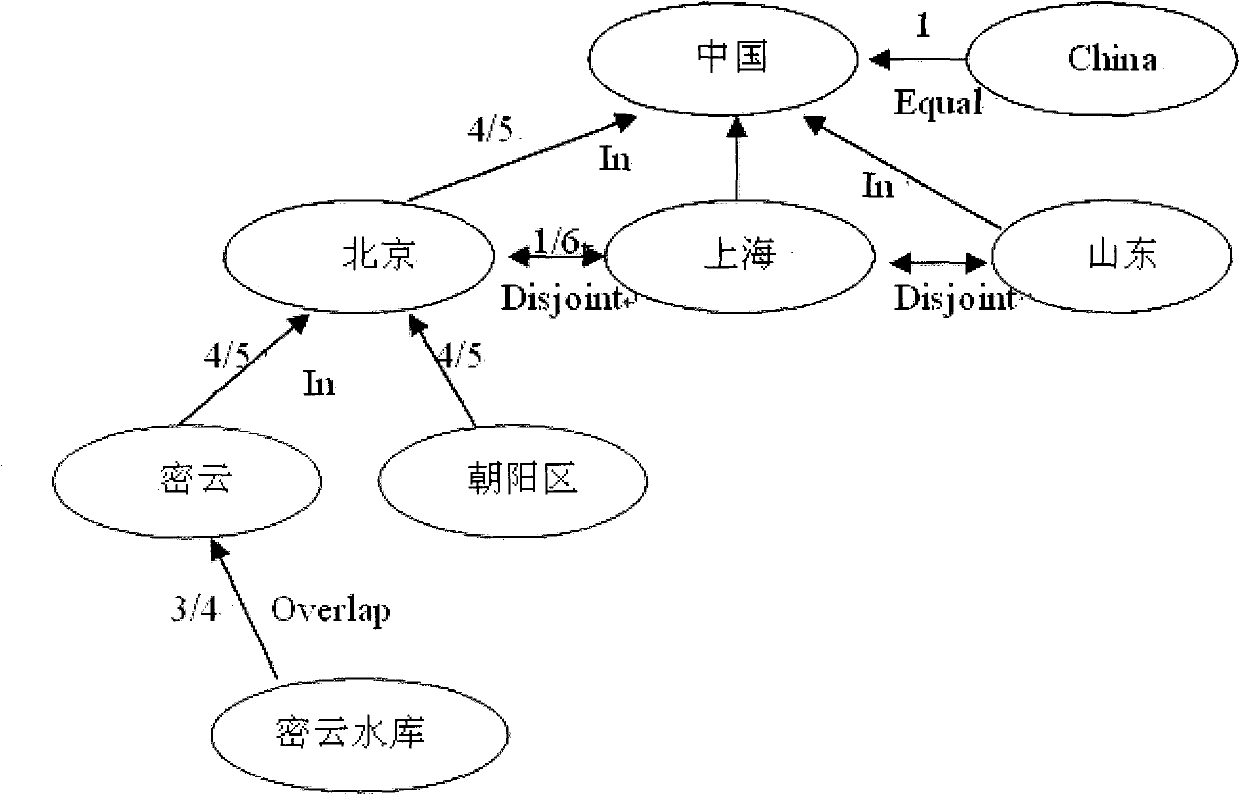Geographic element querying and extending method based on semantic similarity
A query expansion and geographic element technology, which is applied in the field of geographic element query expansion based on the semantic similarity of geographic ontology, can solve the problems of ambiguity in the description of geospatial information, complex calculation methods, and name confusion, and achieves improved semantic relevance and query results. Accurate, dependency-reducing effects
- Summary
- Abstract
- Description
- Claims
- Application Information
AI Technical Summary
Problems solved by technology
Method used
Image
Examples
Embodiment Construction
[0047] In order to make it easier for those skilled in the art to understand and implement the present invention, the present invention will be further described in detail below in conjunction with the accompanying drawings and specific embodiments.
[0048] On the basis of fully summarizing the deficiencies of the above-mentioned existing query expansion methods, the present invention utilizes the hierarchical structure of geographic ontology and the clear semantic relationship between ontology concepts to propose a geographical Feature query extension method. Based on the semantic distance similarity calculation model, this method fully considers the depth of nodes in the ontology hierarchy, the density of nodes, and the different semantic relationships in the geographic ontology (mainly considering the topological and orientation relationships of geographic elements, such as In, Disjoint, Touch, Overlap, Equal, etc.), attributes between nodes, and the degree of influence of...
PUM
 Login to View More
Login to View More Abstract
Description
Claims
Application Information
 Login to View More
Login to View More - R&D
- Intellectual Property
- Life Sciences
- Materials
- Tech Scout
- Unparalleled Data Quality
- Higher Quality Content
- 60% Fewer Hallucinations
Browse by: Latest US Patents, China's latest patents, Technical Efficacy Thesaurus, Application Domain, Technology Topic, Popular Technical Reports.
© 2025 PatSnap. All rights reserved.Legal|Privacy policy|Modern Slavery Act Transparency Statement|Sitemap|About US| Contact US: help@patsnap.com



